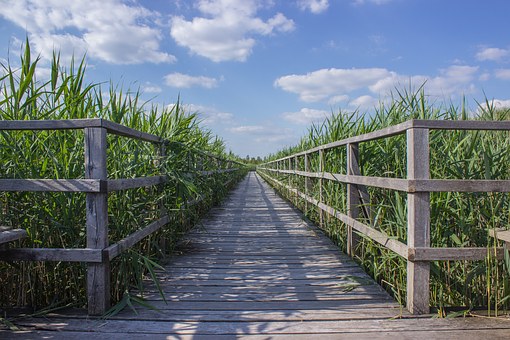创新背景
芦苇生长在湿地和河岸带,数量过多时会一直到田间。在适当的世界收货芦苇,其营养价值可以和干草和稻草相媲美,收获芦苇既是一种保护环境的措施,又可以产生饲料。
创新过程
芦苇通常只用作收成不佳时的紧急解决方案,作为粗饲料喂养马匹和牛。瑞典农业科学大学的研究人员通过研究收获芦苇的恰当方式和时间,尝试用青贮饲料保存芦苇,使其可以在冬季被用作饲料。

研究从2019年开始,从瑞典的不同地方收集芦苇,包括田野、牧场、湖畔和沿海地带等。芦苇最大的作用在于改善环境,它可以从富营养化的陆地和水中回收养分,达到改善水质的目的。研究项目目标是收获至少20吨芦苇,去除波罗的海中20-30公斤的营养磷,防止芦苇被乱扔,营养物质回到大海。
芦苇对鸟类和鱼类都很重要,但散开的芦苇带可能成为单调和难以穿透的表面,导致生物多样性低下。因此,研究团队在初夏时调查现在正在收获的地区的动物和鸟类生活以及水下植物情况,探索芦苇收获如何影响动物和植物。

一般芦苇的收集工作在深秋或冬季进行,那时候芦苇所有的营养都已经下降到根部。研究在季节的早期、晚期和初夏用一台水飞车收集芦苇,观察其中的营养价值如何随时间变化,并分析芦苇样品以探究营养成分。
研究在整体分析芦苇之外,还分别分析叶子和茎,使其各自发挥作用。芦苇叶子比茎更有营养,适合用于饲料,茎更适合用于土壤改良和制作吸管等。研究探索了将芦苇作为饲料是否可以通过各种物理和生物加工方法提高其价值。


研究利用酶的添加剂,分解芦苇以探索它是否能易于消化。研究人员将芦苇包装在圆形捆包中,添加有机酸或细菌培养物,然后将整个东西包裹在保鲜膜中来完成整个作用过程。发现青贮饲料与芦苇作用后可以使其更容易消化,适合作为捕获植物营养作物和营养需求较低的动物的饲料,如马和非挤奶牛以及小母牛和肉质动物。
创新关键点
在不同时间段收集芦苇研究其营养价值变化,最大限度地将其用作动物饲料。
创新价值
发挥芦苇保护环境作用的同时,完善其回收渠道,防止芦苇吸收的营养物质重返水中,将其用作饲料,拓展动物饲料来源。
Observe the nutritional changes of reeds and maximize the use chain of reeds
Reeds are usually only used as an emergency solution during poor harvests, as roughage for horses and cattle. By studying the proper way and time to harvest reeds, researchers at the Swedish University of Agricultural Sciences are trying to preserve reeds with silage so that they can be used as feed during the winter.
The study began in 2019, with reeds collected from various locations in Sweden, including fields, pastures, lakeside and coastal areas. The biggest role of reed is to improve the environment. It can recover nutrients from eutrophic land and water to achieve the purpose of improving water quality. The research project aims to harvest at least 20 tons of reeds, removing 20-30 kg of nutrient phosphorus from the Baltic Sea, preventing the reeds from being littered and the nutrients returning to the sea.
Reeds are important to both birds and fish, but scattered strips of reeds can become monotonous and impenetrable surfaces, leading to low biodiversity. So the research team investigated animal and bird life and underwater vegetation in the area now being harvested in early summer, exploring how reed harvesting affects animals and plants.
Generally, the collection of reeds is carried out in late autumn or winter, when all the nutrients of the reeds have dropped to the roots. The study collected reeds in early, late, and early summer with a waterwheel to see how their nutritional value changed over time, and analyzed reed samples to explore nutrient content. In addition to analyzing reeds as a whole, the study also analyzed leaves and stems separately, allowing them to function individually. Reed leaves are more nutritious than stems and are suitable for feed, and stems are more suitable for soil improvement and making straws, etc.
The study explored whether the use of reeds as feed could enhance its value through various physical and biological processing methods.
Research using enzyme additives to break down reed to see if it can be digested easily. The researchers wrapped the reeds in round bales, added organic acids or bacterial cultures, and then wrapped the whole thing in plastic wrap to complete the process.Silage was found to interact with reed to make it more digestible and suitable as feed for capturing phytonutrient crops and animals with lower nutritional requirements, such as horses and non-milking cows as well as heifers and succulents.
智能推荐
饲料工程创新思维 | 通过DNA测序分析研究饲料添加剂对抗生素耐药性的影响
2022-08-22通过使用DNA测序分析家禽屎肠杆菌和粪肠杆菌的分离株,探究家禽养殖使用具有离子载体的饲料添加剂是否会传播抗药性细菌,影响人体对某些抗生素的耐药性。
涉及学科涉及领域研究方向生物信息学创新思维 | 通过DNA测序分析研究饲料添加剂对抗生素耐药性的影响
2022-08-22通过使用DNA测序分析家禽屎肠杆菌和粪肠杆菌的分离株,探究家禽养殖使用具有离子载体的饲料添加剂是否会传播抗药性细菌,影响人体对某些抗生素的耐药性。
涉及学科涉及领域研究方向植物科学与技术创新思维 | 利用植物特性制作过滤器,吸收土壤和水中的金属污染物
2022-08-18利用植物自身特性,收集植物根部制成植物性过滤器。过滤器过滤受污染的水,吸收水中的金属进行化学反应,有助于修复土壤和水源,保护环境并减少植物侵害。
涉及学科涉及领域研究方向